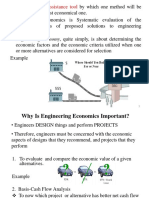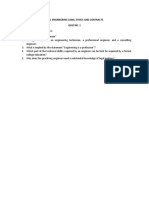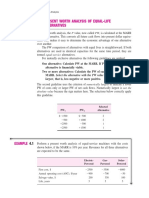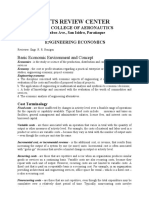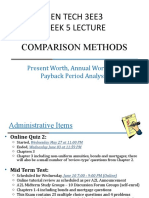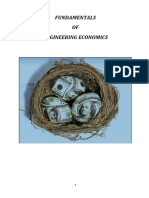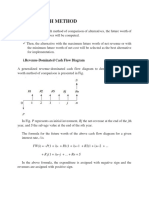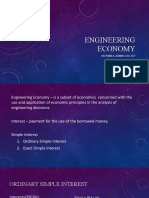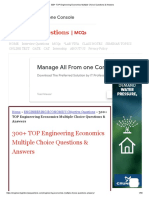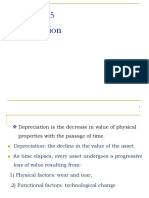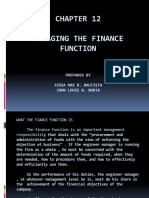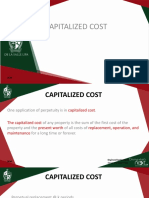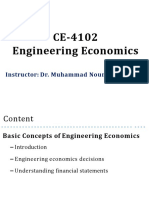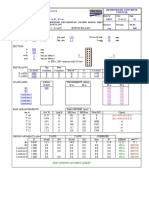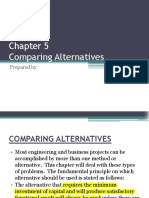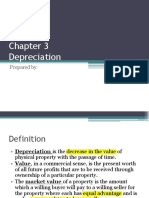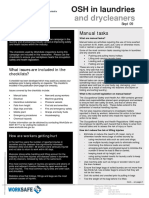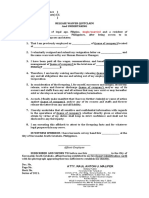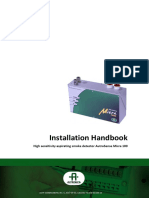0% found this document useful (0 votes)
3K views42 pagesChapter 1 - Basic Concept of Engineering Economics
This document provides an overview of basic concepts in engineering economics, including:
1. It introduces concepts like scarcity, trade-offs, opportunity costs, and how economics involves making choices with limited resources.
2. It discusses how these concepts relate to fundamental questions engineers must answer, like which projects are worthwhile and how projects should be prioritized and designed.
3. It briefly outlines the laws of supply and demand and their relationship to pricing and quantities in economics.
Uploaded by
Reffisa JiruCopyright
© © All Rights Reserved
We take content rights seriously. If you suspect this is your content, claim it here.
Available Formats
Download as PDF, TXT or read online on Scribd
0% found this document useful (0 votes)
3K views42 pagesChapter 1 - Basic Concept of Engineering Economics
This document provides an overview of basic concepts in engineering economics, including:
1. It introduces concepts like scarcity, trade-offs, opportunity costs, and how economics involves making choices with limited resources.
2. It discusses how these concepts relate to fundamental questions engineers must answer, like which projects are worthwhile and how projects should be prioritized and designed.
3. It briefly outlines the laws of supply and demand and their relationship to pricing and quantities in economics.
Uploaded by
Reffisa JiruCopyright
© © All Rights Reserved
We take content rights seriously. If you suspect this is your content, claim it here.
Available Formats
Download as PDF, TXT or read online on Scribd
/ 42
